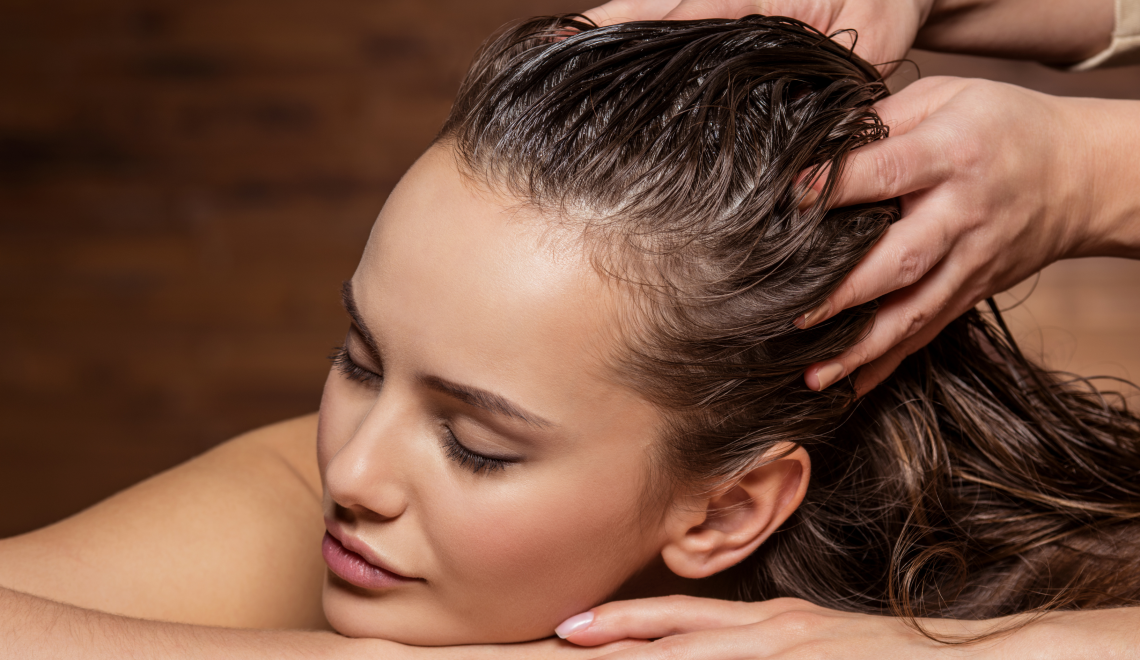
People have been using natural ingredients to nourish their hair and scalp for many years. From coconut oil to olive oil, these kitchen staples have many benefits. Jojoba oil is one such natural wonder that’s been doing magic for hair and scalp health for thousands of years.
Jojoba oil has been making waves in the beauty world, and for good reason. But with all the information out there, you might wonder if it is good for your hair and scalp. We will discuss jojoba oil, its benefits, and how to use it for better results.
Benefits of Jojoba Oil for Hair and Scalp
Jojoba oil comes from the Simmondsia chinensis plant, a shrub native to North America. The oil itself is actually a liquid wax with a chemical structure similar to the natural oils or sebum produced by our scalp. This similarity allows jojoba oil to blend easily with our scalp’s sebum.
It has many benefits, like:
-
Moisturises scalp and hair without greasiness
Jojoba oil’s lightweight formula absorbs easily and deeply hydrates the scalp and hair shaft without leaving a greasy residue. Its similar structure to sebum allows it to penetrate the hair shaft, lock in moisture, and prevent dryness. This means shinier, more manageable hair that’s less prone to breakage.
-
Nourishes with vitamins and minerals
Jojoba oil is packed with vitamins and minerals like E, B, and copper. These are essential for healthy hair growth. They nourish the hair follicles and promote stronger, thicker strands. Healthy eating habits and healthy vitamins for hair are a great combination.
-
Balances scalp oil production
Sometimes, an imbalanced scalp can cause dryness or excessive oiliness. Jojoba oil can regulate sebum production. Its anti-inflammatory properties can soothe a sensitive scalp and reduce dandruff. You will have a calmer, healthier scalp and less greasy hair.
How to Use Jojoba Oil in Your Hair Care Routine
If you want to incorporate jojoba oil into your hair care routine, there are some effective ways to use it. We’ll be discussing four simple ways to use this oil.
-
Scalp Treatment
Give your scalp a pre-shampoo massage. Apply a few drops of jojoba oil to your fingertips and gently massage it into your scalp for a few minutes. Let it work for 20-30 minutes before shampooing as usual. This process helps loosen dead skin cells and promote circulation.
-
Hair Conditioning
Jojoba oil can be used as a hair conditioning treatment. Apply a generous amount of oil to your hair, mainly on the ends, as they are the most prone to dryness. Leave it for 30 minutes or overnight for an extra boost of hydration. Rinse thoroughly with shampoo and conditioner.
-
Leave-In Treatment
If you have frizzy hair and want to add shine, a leave-in jojoba oil treatment is a great option. Apply a small amount (a dime-sized drop for short hair, a nickel-sized drop for long hair) to damp hair, mainly on the mid-lengths and ends. This helps to control the frizz and provides a healthy-looking shine.
-
Styling Aid
Jojoba oil can also be used to achieve sleek styles. After styling, apply a few drops to your fingertips and smooth them over flyaways or unmanageable strands. This can add shine and a touch of definition without adding weight to your hair.
Safety and Precautions
Although jojoba oil is safe for most hair types, it’s always a good idea to do a patch test before applying it liberally. Apply a small amount to your inner elbow and wait for some time to check for any allergic reactions. Some things to keep in mind are:
- If you have oily hair, start with a smaller amount and see how your hair reacts.
- For dry hair, you can use jojoba oil daily. Others can use it a few times a week. Experiment to find what works best for you.
However, if you have any pre-existing scalp conditions, consult a dermal therapist before using jojoba oil.
Conclusion
Jojoba oil is a versatile and natural way to nourish your hair and scalp. Its hydrating and balancing properties are essential for a healthy hair care routine. Like most natural remedies, jojoba oil works best when used consistently. Include it in your routine 2-3 times weekly for the best results. Over time, you’ll notice your hair becoming softer, shinier, and more manageable, with a healthy scalp to support it.







